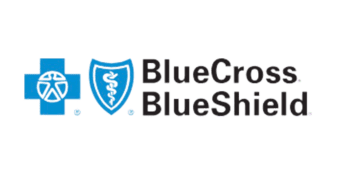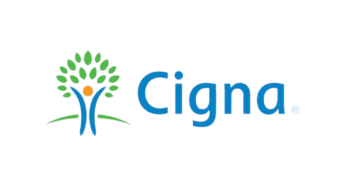Trichotillomania (Hair Pulling Disorder) Treatment Facility for Teens and Adolescents in Dallas, Texas
A study referenced by the National Institutes of Health estimates the lifetime prevalence of trichotillomania, or compulsive hair-pulling, at 1-3%, with a strong female predominance. At BasePoint Academy, we address adolescent mental health issues, including obsessive-compulsive disorder (OCD), seven days a week. Our trichotillomania treatment for teens in Dallas, Texas, focuses on managing trichotillomania urges and intrusive thoughts.
Are you looking for trichotillomania treatment near me or exploring effective hair pulling disorder treatment options for your teen? As specialists in adolescent psychology, we offer in-person day treatment and, when appropriate, access to an online therapist for hair pulling for added flexibility. Keep reading to learn more about our targeted programs for teens and adolescents facing hair-pulling behaviors and anxiety—call us today to schedule your child’s free assessment.
What Is Trichotillomania Disorder in Teenagers?
Trichotillomania in teenagers is one of many body-focused repetitive behaviors (BFRB) that often leads to noticeable hair loss and psychological distress. Teens with this condition feel a strong urge to pull hair from their scalp, eyebrows, or other areas, typically as a response to stress or anxiety. This repetitive hair-pulling, related to OCD and anxiety, usually begins in early adolescence.
While trichotillomania causes are not fully understood, research points to a mix of genetic, neurological, and environmental factors. Early intervention is crucial, as hair loss due to trichotillomania can significantly impact a teen’s self-esteem and social life. Families searching for trichotillomania treatment near me can find specialized care that includes cognitive behavioral therapy for OCD, helping teens develop healthier coping mechanisms for managing stress and anxiety. For added flexibility, some programs also connect teens with an online therapist for hair pulling to provide ongoing support from home.
Trichotillomania can fluctuate in severity, with some teens pulling their hair during specific situations—like when they’re feeling anxious, bored, or stressed—while others may pull habitually throughout the day. Obsessive hair-pulling behaviors can create feelings of shame and isolation, leading many teens to hide their OCD symptoms from family and friends. Without professional OCD treatment, these emotions can further impact teens’ mental health, increasing the risk of anxiety and depression.
Insurance Coverage for Teen Trichotillomania
Disorder
Our complimentary assessment with a licensed clinician will recommend the appropriate level of care for your teen struggling with trichotillomania disorder. We can also check your insurance coverage levels.
Call us today to schedule a complimentary same-day assessment at (972) 357-1749 or complete our inquiry form.
Teenage Trichotillomania Disorder
Treatment Admissions
Signs and Symptoms of Adolescent Trichotillomania Hair-Pulling Disorder
Recognizing the signs and symptoms of adolescent trichotillomania, or hair-pulling disorder, can be challenging, especially since teens may try to hide the behavior. This disorder is often rooted in difficulties with emotional regulation, where a teen may struggle to manage feelings of stress, tension, or anxiety. Hair-pulling becomes a coping mechanism, offering temporary relief or satisfaction.
Trichotillomania is similar to obsessive-compulsive disorder (OCD). Both disorders involve obsessive thoughts and compulsive behaviors. Repetitive actions characterize trichotillomania, focused on pulling out hair from the scalp, eyebrows, eyelashes, or other body parts. In many cases, teens experience a buildup of tension or anxiety before hair-pulling, followed by a sense of relief or gratification afterward. The repetitive nature of hair-pulling can closely resemble behaviors seen in OCD, though, in trichotillomania, the behavior is linked explicitly to hair.
Understanding the following corresponding signs and symptoms of trichotillomania can help you support your teen in finding healthier ways to regulate their emotions and manage stress.
- Recurrent, irresistible urges to pull hair from the scalp, eyebrows, or eyelashes may lead to noticeable hair loss, such as bald patches or thinning eyebrows.
- Feelings of tension before hair-pulling, a sense of relief or pleasure afterward, and repeated attempts to stop the behavior without success.
- A preference for specific types of hair based on texture or length is often accompanied by ritualistic behaviors related to pulling, such as examining or playing with the hair once it’s pulled.
- Avoidance of social situations to hide hair loss, perhaps wearing hats, wigs, or makeup.

Self-harm and trichotillomania are often mistaken for one another, as both involve behaviors that may cause physical damage. However, unlike self-harm, which is typically motivated by a desire to relieve intense emotional pain, trichotillomania is driven by an uncontrollable urge that’s often subconscious. This distinction is essential for understanding the unique nature of trichotillomania and seeking appropriate support.
If you notice any of these signs in your adolescent, contact us or another mental health professional. We can provide guidance in developing strategies for managing trichotillomania urges, reducing hair-pulling, and addressing any co-occurring conditions such as OCD and anxiety.
Statistics and Information on Teenage Trichotillomania Hair-Pulling Disorder for Families in Dallas, Texas
Research highlights trichotillomania as a complex disorder, often developing around age 12, with approximately 75% of cases occurring in females. Studies at Texas Children’s Hospital and beyond reveal associated conditions like major depression, ADHD, and anxiety. Around 80% of those with trichotillomania face other psychiatric conditions.
Positioned on the obsessive-compulsive spectrum, trichotillomania shares symptoms with OCD, and medication for OCD can also aid in managing hair-pulling. Episodes vary in duration, can involve multiple areas, and often fluctuate, with some individuals experiencing long breaks before symptoms return.
Do Teen Mental Health Therapy Programs Provide Treatment for Trichotillomania Disorder?
Yes, teen mental health therapy programs often provide effective treatment for trichotillomania, addressing the obsessive thoughts and compulsions associated with this hair-pulling disorder. At BasePoint Academy, our specialized trichotillomania therapy helps teens develop healthier coping mechanisms and manage their compulsions.
Trichotillomania therapy typically combines Cognitive Behavioral Therapy (CBT) and Habit Reversal Training (HRT) to help teens understand and control compulsive urges. Treatment may also address underlying anxiety and stress, which often contribute to intrusive thoughts and ritualistic behaviors. By providing these targeted tools, programs like ours guide teens in building resilience and confidence. Contact us to explore the best options for your teen’s needs.
Types of Trichotillomania Hair-Pulling Disorder Treatment Programs for Teens in Dallas, Texas
If your teen is struggling with trichotillomania—a hair-pulling disorder linked to obsessions and compulsions—finding the proper treatment can make a world of difference. In Dallas, Partial Hospitalization Programs (PHPs) for OCD and other inpatient and outpatient services provide targeted trichotillomania therapy for teens. These programs combine structured, intensive care, focusing on managing repetitive actions and promoting emotional stability.
These programs address mental health and OCD-related challenges in a supportive setting, helping teens build resilience and learn healthy coping mechanisms. The following are examples of available options for trichotillomania treatment for teens in Dallas, Texas, though this list is not exhaustive. To learn more about BasePoint Academy’s Dallas PHP for trichotillomania in children, call (972) 357-1749.
Partial Hospitalization Program (PHP) and Day Treatment
A Partial Hospitalization Program (PHP) or day treatment program offers structured, intensive behavioral therapy for trichotillomania and OCD in teens. These programs provide support and therapeutic interventions five to six days a week. They help teens build coping skills to manage compulsive behaviors and intrusive thoughts in a supportive, non-residential setting.
Inpatient and Residential Treatment
Inpatient and residential treatment programs offer a more immersive approach for teenagers struggling with compulsive behaviors and hair-pulling disorders. With a focus on emotional regulation and trichotillomania, the round-the-clock support is delivered in a structured environment. Targeted trichotillomania therapies for teens help them develop long-lasting coping skills and regain control over their behaviors.
Outpatient and Evening Treatment Programs
Outpatient and evening treatment programs offer flexible support options for children seeking treatment for trichotillomania. These programs allow teens to attend trichotillomania therapy sessions focused on managing compulsive behaviors and building healthy coping strategies while maintaining their regular routines. Outpatient care can be an effective step for those needing support without the commitment of full-day programs.
Intensive Outpatient Program (IOP)
An Intensive Outpatient Program (IOP) provides a higher level of care for teens needing structured support for managing trichotillomania urges. In addition to individualized therapy, many IOPs offer trichotillomania support groups where teens can connect with peers facing similar challenges. They can share experiences and develop strategies to manage hair-pulling and anxiety in a supportive community setting.
Online Therapy or Teletherapy Programs
Online therapy or teletherapy programs offer an even more convenient, accessible way for teens to receive support for mental health and OCD-related challenges like trichotillomania. Through virtual sessions, teens can connect with licensed therapists from home, making it easier to access an online therapist for hair pulling who can provide tools to manage compulsive behaviors and build healthier coping strategies.
This flexible option can be ideal for families balancing busy schedules or seeking added privacy. However, in-person behavioral therapy may be more effective for moderate to severe cases of teenage trichotillomania hair-pulling disorder.

Types of Counseling and Trichotillomania Therapies for Teens
If your teen is struggling with trichotillomania, various counseling options can provide effective support. These trichotillomania therapies for teens address the underlying emotional issues that contribute to scalp-picking and hair-pulling, or other ritualistic behaviors. The following outlines some common therapy types available, but this is just a sample and not an exhaustive list of options. Contact us to learn more.
Cognitive Behavioral Therapy (CBT)
Cognitive Behavioral Therapy (CBT) is a highly effective treatment option for teens struggling with trichotillomania. This form of therapy identifies and changes negative thought patterns and behaviors associated with this condition. Through cognitive behavioral therapy for hair pulling, your teen can learn valuable coping skills to manage their impulses and develop healthier habits.
In some cases, therapists may recommend combining CBT with medication for OCD, such as Selective Serotonin Reuptake Inhibitors (SSRIs), to enhance treatment effectiveness. This is particularly likely if trichotillomania is suspected to be closely linked to OCD compulsions and rituals. This integrative approach can address the underlying anxiety and obsessive thoughts that often accompany trichotillomania, providing a more comprehensive support system for your teen’s recovery.
Mindfulness-Based Therapy
Mindfulness-based therapy is a practical approach for teens dealing with trichotillomania, as it encourages them to develop greater awareness of their thoughts and feelings. By practicing mindfulness techniques, your teen can learn to observe their impulses to engage in hair-pulling without judgment. This technique creates a mental space to respond differently to these urges.
This therapeutic approach often incorporates relaxation techniques and guided meditation, promoting emotional regulation and reducing stress. As your teen becomes more attuned to their emotional triggers, they can cultivate healthier coping mechanisms, making it easier to manage compulsive behaviors and improve their overall well-being.
Group and Family Therapy
Group and family therapy can be incredibly beneficial, providing a supportive environment for sharing experiences and learning from others. In group therapy, your teen can connect with peers facing similar challenges, fostering a sense of community and understanding. This shared experience can reduce feelings of isolation and encourage open discussions about coping strategies and successes.
Family therapy involves the whole family in the treatment process, helping to improve communication and understanding around the challenges of trichotillomania. By involving family members, you can work together to create a supportive home environment that encourages healthy habits and emotional support, reinforcing the progress your teen makes in therapy.
Habit Reversal Training (HRT) Programs
Habit Reversal Training (HRT) is a structured therapeutic approach that enables teens to break free from compulsive behaviors like repetitive hair-pulling. This program involves teaching your teen to recognize the early signs of their hair-pulling urges and replace them with healthier behaviors.
In addition to individual practice, HRT often incorporates support from family and peers, encouraging open communication about triggers and challenges. This collaborative environment helps reinforce positive changes and builds a solid support system for your teen as they work toward reducing their hair-pulling habits.
Dialectical Behavior Therapy (DBT)
Dialectical Behavior Therapy (DBT) is a valuable therapeutic approach, as it emphasizes the development of emotional regulation and coping skills. Through DBT, your teen learns to understand and manage their emotions more effectively, which can be particularly helpful for those struggling with the overwhelming urges associated with hair pulling. This therapy combines individual sessions with skills training in group settings.
One of the critical components of DBT is mindfulness, which helps your teen stay present and aware of their thoughts and feelings without judgment. By cultivating this awareness, they can better identify triggers for compulsive hair-pulling and respond to them healthier. Overall, DBT addresses the symptoms of trichotillomania and equips your teen with essential life skills to navigate their emotional landscape more confidently.
Acceptance and Commitment Therapy (ACT)
Acceptance and Commitment Therapy (ACT) offers a unique approach that focuses on accepting thoughts and feelings rather than trying to control or avoid them. In ACT, your teen will learn that experiencing difficult emotions and urges, such as those related to hair pulling, is a natural part of life.
This understanding can help reduce the struggle against their compulsions, allowing them to live meaningfully despite these challenges. Through various exercises and mindfulness techniques, ACT encourages your teen to commit to values-based actions. By emphasizing acceptance and personal values, your teen can develop resilience and learn to respond to their hair-pulling urges with greater awareness and intention.
Exposure and Response Prevention Therapy (ERP)
Exposure and Response Prevention (ERP) is a powerful trichotillomania therapy, mainly when compulsive hair-pulling is linked to OCD. This therapeutic approach involves gradually exposing your teen to the situations that trigger their hair-pulling urges while helping them refrain from acting on those impulses.
By facing their fears in a controlled environment, your teen can learn to manage their anxiety and reduce the compulsion to engage in hair pulling over time. Throughout the ERP process, your teen will work closely with a therapist who will guide them in developing effective coping strategies to deal with the discomfort during exposure exercises. This helps diminish the power of compulsive behaviors and builds confidence in the ability to manage anxiety and resist urges.
BasePoint Academy Accepts health Insurance
We accept most major health insurance providers in Texas and can check your treatment coverage levels on your behalf.
How to Find Trichotillomania Disorder Treatment Facilities in Dallas, Texas
At BasePoint Academy, we understand the challenges of trichotillomania. We offer multiple treatment facilities in and near Dallas, Texas, specifically designed to support teens on their transformative path to recovery. Our team provides compassionate, effective trichotillomania treatment for teens in Dallas, Texas. Don’t hesitate to call (972) 357-1749 and explore the options available at BasePoint Academy.
- Arlington, Texas: 3900 Arlington Highlands Blvd, Suite 237, Arlington, TX 76018
- Forney, Texas: 713 W Broad St, Suite 200, Forney, TX 75126
- Frisco, Texas: 8275 Judges Way, Suite 100I, Frisco, TX 75036
- McKinney, Texas: 4733 Medical Center Drive, McKinney, TX 75069
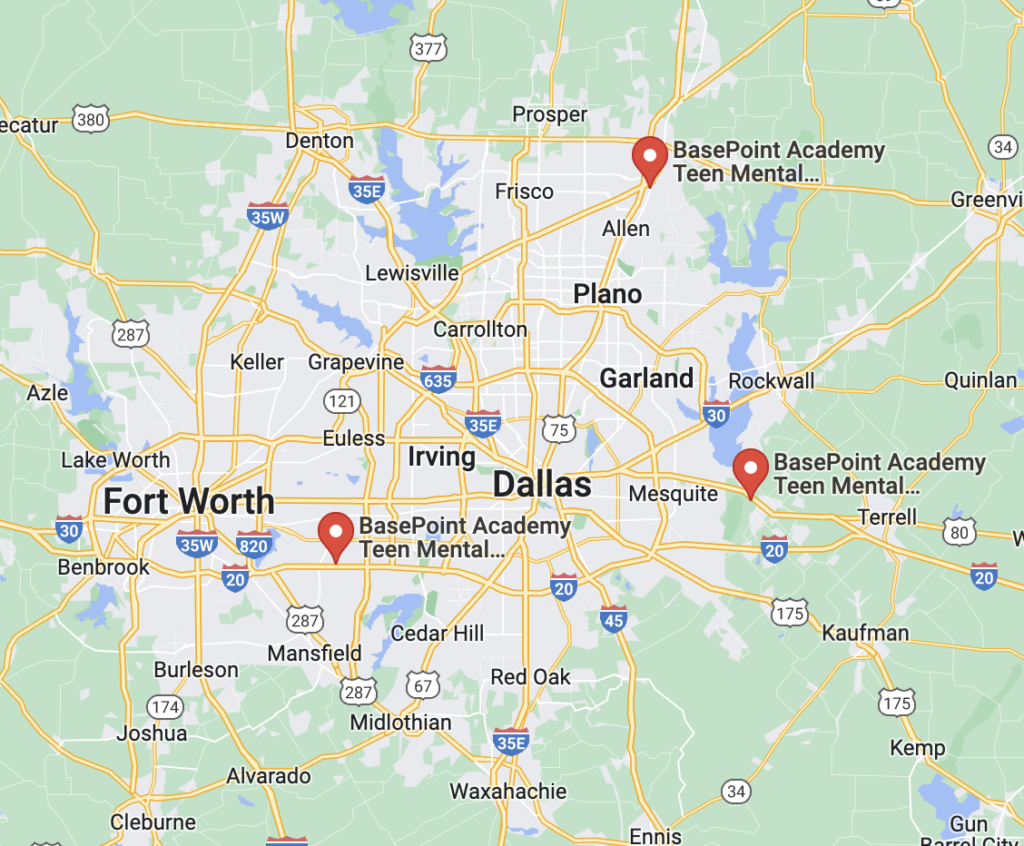
Trichotillomania Treatment Program in Arlington, Texas
Arlington is often called the entertainment capital of Texas, thanks to attractions like Six Flags Over Texas and Hurricane Harbor Water Park. This sought-after destination boasts a friendly atmosphere and iconic venues such as AT&T Stadium, home to the Dallas Cowboys. With its welcoming community and access to quality healthcare, Arlington is an excellent place for effective mental health treatment.
- BasePoint Academy – Arlington, Texas: 3900 Arlington Highlands Blvd, Suite 237, Arlington, TX 76018, United States
Trichotillomania Treatment Program in Forney, Texas
Kaufman County’s Forney captures the essence of small-town charm. Known as the “Antique Capital of Texas,” this city features a striking eight-foot-tall replica of the Statue of Liberty. Named after a prominent Pennsylvania journalist and politician, Forney’s easy access to the DFW Metroplex makes this close-knit community an ideal setting for exceptional adolescent mental health care.
- BasePoint Academy – Forney, Texas: 713 W Broad St, Suite 200, Forney, TX 75126, United States
Trichotillomania Treatment Program in McKinney, Texas
McKinney is home to one of the Lone Star State’s most charming, historically rich downtowns, renowned for its distinctive annual festivals and profound sense of community. As a rapidly expanding city, McKinney offers stunning parks like Towne Lake Park and Historic McKinney Square while emphasizing family-oriented events and educational programs that promote healing and wellness.
- BasePoint Academy – McKinney, Texas: 4733 Medical Center Drive, McKinney, TX 75069, United States
Trichotillomania Treatment Program in Frisco, Texas
Frisco, Texas, is one of North Texas’s most dynamic and family-focused cities, celebrated for its modern charm and commitment to community well-being. Known for attractions like Frisco Commons Park and the lively Frisco Square, the city offers residents a welcoming blend of recreation, culture, and connection. With its strong emphasis on youth development, education, and wellness, Frisco provides an ideal environment for individuals seeking compassionate trichotillomania treatment and mental health support.
- BasePoint Academy – Frisco, Texas: 8275 Judges Way, Suite 100i, Frisco, Texas, 75036, United States
Alternative Ways to Find Trichotillomania Treatment Programs in Dallas, Texas
Finding the proper trichotillomania treatment program in Dallas, Texas, can feel overwhelming, but we are here to guide you every step of the way. Explore the following outline for a suitable treatment program that aligns with your budget and teen’s needs.
- Search Online: Use search engines and enter terms like “Trichotillomania treatment for teens in Dallas, TX” or “Hair-pulling disorder therapy near me.” You can specify your location for more relevant results.
- Ask for Referrals from a Doctor or Therapist: Consult your primary care doctor, dermatologist, or therapist for referrals to specialists or treatment centers focusing on trichotillomania and OCD.
- Contact Local Mental Health Clinics: For treatment for trichotillomania, contact mental health clinics or psychiatric hospitals in cities like Fort Worth, Arlington, Irving, Plano, and Garland.
- Check with Your Health Insurance Provider: Contact your insurer for a list of in-network therapists or treatment facilities in and near Dallas, Texas, that offer services for compulsive behaviors like hair-pulling.
- Call National Mental Health Helplines: Helplines such as NAMI or SAMHSA’s National Helpline (1-800-662-HELP) can help you find trichotillomania treatment options near you.
- Explore Online Therapy Options: Many providers offer virtual therapy programs for hair-pulling disorders, which allow patients to receive treatment remotely when local options are limited.
What Is the BasePoint Difference?

7am to 7pm CST
7 Days a Week
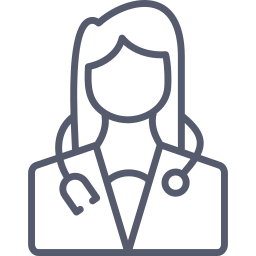
Full Time Physican
On Site

We Transport
To and From

Therapy Involving
the Whole Family
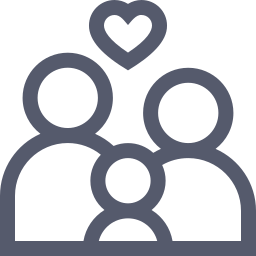
Family
Owned
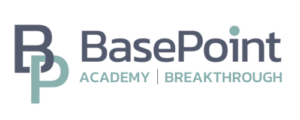
Does Health Insurance Cover Trichotillomania Treatment for Teens in Dallas, Texas?
Yes, many health insurance plans cover trichotillomania treatment for teens in Dallas, TX. It’s essential to check your insurance policy for specific coverage details, including trichotillomania therapy types and provider networks. A thorough understanding of your coverage will ensure the necessary support for teenage trichotillomania hair-pulling disorder.
Insurance coverage for mental health services can vary widely, so it’s crucial to contact your insurer or a healthcare provider, like BasePoint Academy, directly. We can provide all the information you need, including the types of therapies covered and any associated out-of-pocket costs. We’re committed to making the process easier for your family. Understanding your options can help you secure the best possible care while making informed decisions for your teen.

What Happens at a Teen and Adolescent Trichotillomania Treatment Facility?
At a teen and adolescent trichotillomania treatment facility, your child will engage in a supportive, structured environment focused on healing and personal growth. Treatment typically involves a combination of therapeutic modalities, including Cognitive Behavioral Therapy (CBT) and Habit Reversal Training (HRT). These approaches help your teen understand the triggers behind their hair-pulling behaviors and develop healthier coping strategies.
In addition to individual therapy, many facilities offer trichotillomania support groups where teens can share their experiences and connect with others facing similar challenges. This sense of community fosters understanding and support, helping your child feel less isolated. Family involvement is also encouraged, as many studies have emphasized its crucial role in recovery. These therapies aim to address the physical, emotional, and psychological components of trichotillomania. The treatment experience is tailored to meet your teen’s unique needs, providing the tools and support necessary to manage their condition effectively.
What Is the Admissions Process for Trichotillomania Treatment at BasePoint Academy?
At BasePoint Academy, the admissions process for trichotillomania treatment for teens in Dallas, Texas, is as seamless and supportive as possible. Our family-centered approach ensures your teen receives the tailored care needed to thrive. While there may be some nuances from one patient to the next, here’s what you can generally expect during the process:
- Initial Contact: Contact us via phone or our contact page. Our compassionate team is here to listen to your concerns and answer any questions you may have about our programs.
- Preliminary Assessment: After your initial contact, we’ll conduct a preliminary assessment to understand your teen’s needs. This step helps us determine the best course of action.
- Intake Assessment: If the preliminary assessment indicates that our services may be beneficial, we’ll schedule a comprehensive intake assessment. This in-depth evaluation gathers essential information about your teen’s mental health history, symptoms, and previous treatments.
- Evaluation and Diagnosis: Our trained professionals will analyze the intake information to provide an accurate diagnosis and evaluate the severity of your teen’s trichotillomania. This step ensures that we fully understand their condition and can address it effectively.
- Personalized Treatment Plan Development: Our team will collaborate with you and your teen to create a tailored treatment plan based on the evaluation. This plan outlines specific therapeutic approaches and goals customized to your teen’s unique situation.
- Insurance Verification and Financial Counseling: We’ll help you check your insurance coverage and provide financial counseling options to ensure you understand the treatment costs. We aim to make this process as transparent as possible.
- Admission Approval: We’ll seek admission approval once the treatment plan is finalized and insurance matters are resolved.
- Family Orientation (if applicable): If your teen participates in family-focused therapy, we’ll hold an orientation session for you and your family. This is an opportunity to learn about the program, ask questions, and discuss how you can support your teen throughout their recovery.
- Admittance to the Program: After completing all steps, your teen will be admitted to our program and the supportive environment where their healing can begin.
- Ongoing Monitoring and Adjustments: Throughout treatment, we’ll continuously monitor your teen’s progress and adjust the treatment plan as needed. Our commitment is to ensure they receive the best care possible as they work towards recovery.
How Much Does Hair-Pulling Disorder Treatment Cost with Health Insurance Coverage?
The cost of hair-pulling disorder treatment with health insurance coverage can vary significantly based on the type of treatment your teen receives and other factors. Many insurers cover therapy sessions, medications, and other essential services, usually requiring only a nominal copayment averaging between $20 and $60. However, confirming your policy’s details to understand your financial responsibility entirely is essential.
To get a more accurate estimate as it relates to your teen’s treatment needs, contact BasePoint Academy. Our financial counselors can help you navigate treatment expenses and payment options so you can focus on getting your teen the proper care. Understanding your insurance benefits will empower you to seek the best treatment options while minimizing out-of-pocket costs.
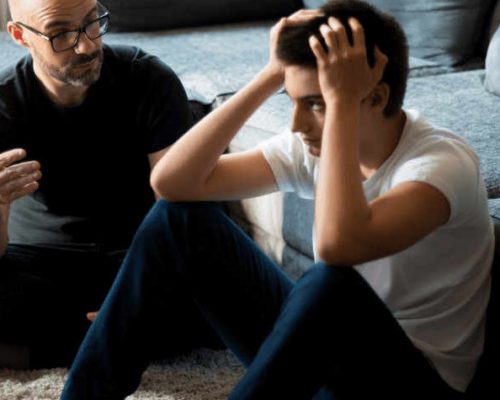
How Much Does Hair-Pulling Disorder Treatment Cost with Health Insurance Coverage?
Without health insurance support, the cost of hair-pulling disorder treatment can be quite substantial. The cost of treatment will vary based on the type of services your teen requires and several other factors. On average, therapy sessions can range from $100 to $250 per session, depending on the provider’s expertise and location. You’ll want to consider potential additional costs for medications and assessments.
If you find yourself in this situation, exploring different options, such as sliding scale fees or payment plans, is essential. Many treatment facilities, including BasePoint Academy, provide financial counseling to help families like yours understand payment plans and potential funding solutions. By researching available resources, you can find a treatment path that works for your budget while ensuring your teen receives the support they need.
Contact The BasePoint Academy Today!
Does your teenager have signs of a hair-pulling disorder? Contact BasePoint Academy to discuss a treatment plan to improve your teen’s mental health.
Sources
- World Health Organization. (n.d.). Mental health of adolescents. World Health Organization. Retrieved from https://www.who.int/news-room/fact-sheets/detail/adolescent-mental-health on July 11, 2023
- Horowitz, J. M. (2019, February 20). Most U.S. teens see anxiety and depression as a major problem among their peers. Pew Research Center’s Social & Demographic Trends Project. Retrieved from https://www.pewresearch.org/social-trends/2019/02/20/most-u-s-teens-see-anxiety-and-depression-as-a-major-problem-among-their-peers/ on July 11, 2023
Statistics on Hair-Pulling Disorder for Texas Families
- During a two-year observation of ten children with trichotillomania at Texas Children’s Hospital, researchers concluded that trichotillomania is a complex disorder with multiple underlying factors. The associated psychological conditions noted included significant depression in one case, ADHD in another, and an “anxious and nervous personality” in a third case.
- A Texas psychologist who specifically built her practice around trichotillomania indicates that individuals typically begin to experience the hair-pulling disorder around the age of 12. Approximately 75% of those affected are female.
- Studies indicate that trichotillomania can worsen over time, especially when it begins in childhood. However, research has also demonstrated that with appropriate treatment, children and adolescents can often see an improvement in their hair-pulling symptoms or find it easier to manage them.
- According to Mental Health America, trichotillomania falls within the obsessive-compulsive spectrum. It shares symptoms with obsessive-compulsive disorder (OCD), like compulsive checking, counting, or washing. These two disorders often occur in the same families, and medication for OCD treatment can also be beneficial in managing trichotillomania.
- A recent study published on Psychiatry Online indicates that it’s common for individuals to pull hair from multiple areas, including the scalp and eyebrows. Hair-pulling episodes can last anywhere from a few minutes to several hours.
- The TLC Foundation for Body-Focused Repetitive Behaviors notes that trichotillomania can be intermittent, with episodes pausing for days or months before returning. In rare cases, hair-pulling has even been reported to occur during sleep.
- A 2021 study published in Karger reports that up to 80% of individuals with hair-pulling disorder also experience an additional psychiatric disorder.
What Is Dallas-Fort Worth (DFW) Known For?
Dallas-Fort Worth (DFW) is known for its culture, history, and a unique blend of modern attractions and Texan heritage. In Dallas, you’ll find renowned landmarks like the Dallas Arts District, one of the largest arts districts in the country. Check out the historic Dealey Plaza, where the Sixth Floor Museum delves into the history surrounding President John F. Kennedy.
Sports fans can enjoy cheering on the Dallas Cowboys at AT&T Stadium in nearby Arlington or watching the Dallas Mavericks at the American Airlines Center. The Fort Worth side offers a mix of old and new, from the historic Fort Worth Stockyards, where you can experience an authentic cattle drive, to the modern Kimbell Art Museum, which houses an impressive art collection. Nature lovers can explore the Fort Worth Botanic Garden or spend a day at the Fort Worth Zoo, ranked among the top zoos in the nation. Together, DFW offers an exciting array of experiences!




